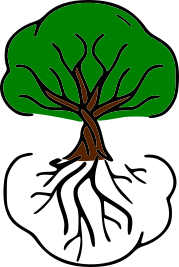In Literature Appetizer, Ben gives you just a taste of a book. Not meant to replace the full meal, this is meant to whet your appetite. Bon appetit!
Burnout is a serious issue among educators. It is also a serious issue among those studying the Climate Crisis. During my time on the Left Coast we had many discussions on how to prevent burnout as Environmental Educators.
While I stand behind everything I have said on this blog, over the past year my tone has become more and more frustrated when talking about the planet. I noticed the signs of burnout, and set about the following courses of action:
Leave work at work.
Fall in love with the natural world again.
For the second point, I realized that since moving into the city I had been less involved in my local environments. I wasn’t going out as much, wasn’t walking as much, and wasn’t aware of the changes happening all around me.
But I also wanted to learn more about the planet as a whole. The ecosystems I had never heard about. Everything outlined in Habitats of the World: A Field Guide for Birders, Naturalists, and Ecologists by Iain Campbell, Ken Behrens, Charley Hesse, and Phil Chaon.
Yes, I read a field guide as a chapter book. Each habitat was roughly 2-3 pages outlining a specific habitat. In total, there were 189 listed in this book. In the introduction, the authors confess that nature doesn’t fit nicely into 189 boxen. There are weird overlaps, microhabitats, and this book didn’t cover anything under the ocean surface. Even with all those concessions, this book was an amazing journey.
For 189 days, I would reach about a habitat and note a prominent location in that habitat. For example, the Great Smokey Mountain National Park is the example for Neartic Temperate Mixed Forest. It was a joy to fill out the map below each day.
I am not a birder, but if you are (or know one) I would highly suggest getting this due to the focus in this book. I was more interested in the Flora outlined in each section, and it did a great job describing what plants experience year round.
This is a great read for anyone who wants to fall in love with this planet again.


